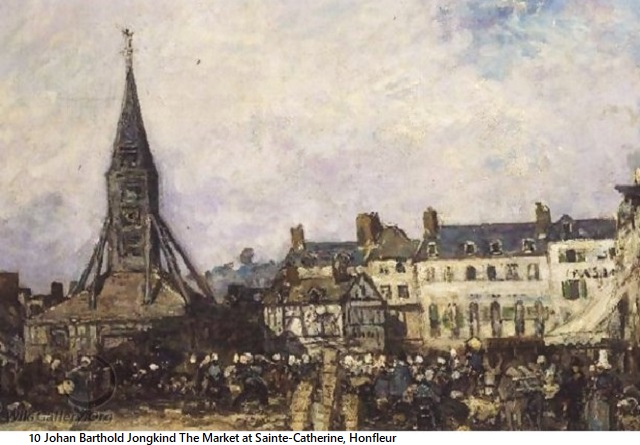SUNDAY Feature on ART of Architecture
Post 229
.
Aleksey Savrasov (1830-1897) was one of Russia’s most remarkable ‘mood landscape painter’. He was a romancists and realist artist.
In 1844, Savrasov was enrolled in the Moscow School of Painting and Sculpture. In 1849, Savrasov was sent to Odessa in Ukraine, here he was greatly influenced by the Romanticism, the popular style of the time. In 1857, on death of his landscape teacher, Rabus, Savrasov took over as master of the landscape class.
Savrasov travelled to England, Switzerland, Copenhagen, Berlin, Dresden, Leipzig, Munich and Paris. At this point of time, many artists were turning to plein-air art, and sought to capture the ethnic essence of their countryside.
In Autumn of 1871, soon after a personal tragedy, Savrasov began to spend more time outdoors. It was during this time that Savrasov painted his greatest painting, ‘The Rooks Have Come Back’. Following the acceptance of this painting, the art style of Savrasov’s changed. He was now optimistic and began to use bright colours. He acquired a knack of forming expansive spaces through rich colours, low horizons, smaller scale architectural structures and reflection of skies in water.
Savrasov's had ingenuous ability to blend the nature with architectural imagery, while creating impressions of the local culture. He maintained the directness of expression and the lyrical quality. He meticulously made sketches and studies on the site, which were complete art works.
In 1862, Savrasov visited the World Fair in London before travelling to Denmark, France, Switzerland and Germany. This trip had an enormous impact on his art.
Savrasov said to his students, ‘Nature is
always breathing, always singing, and the song
it sings is full of majesty. Contemplating
nature is the highest pleasure. The world is
heaven, and life is a mystery -a beautiful
mystery.’
.








































































